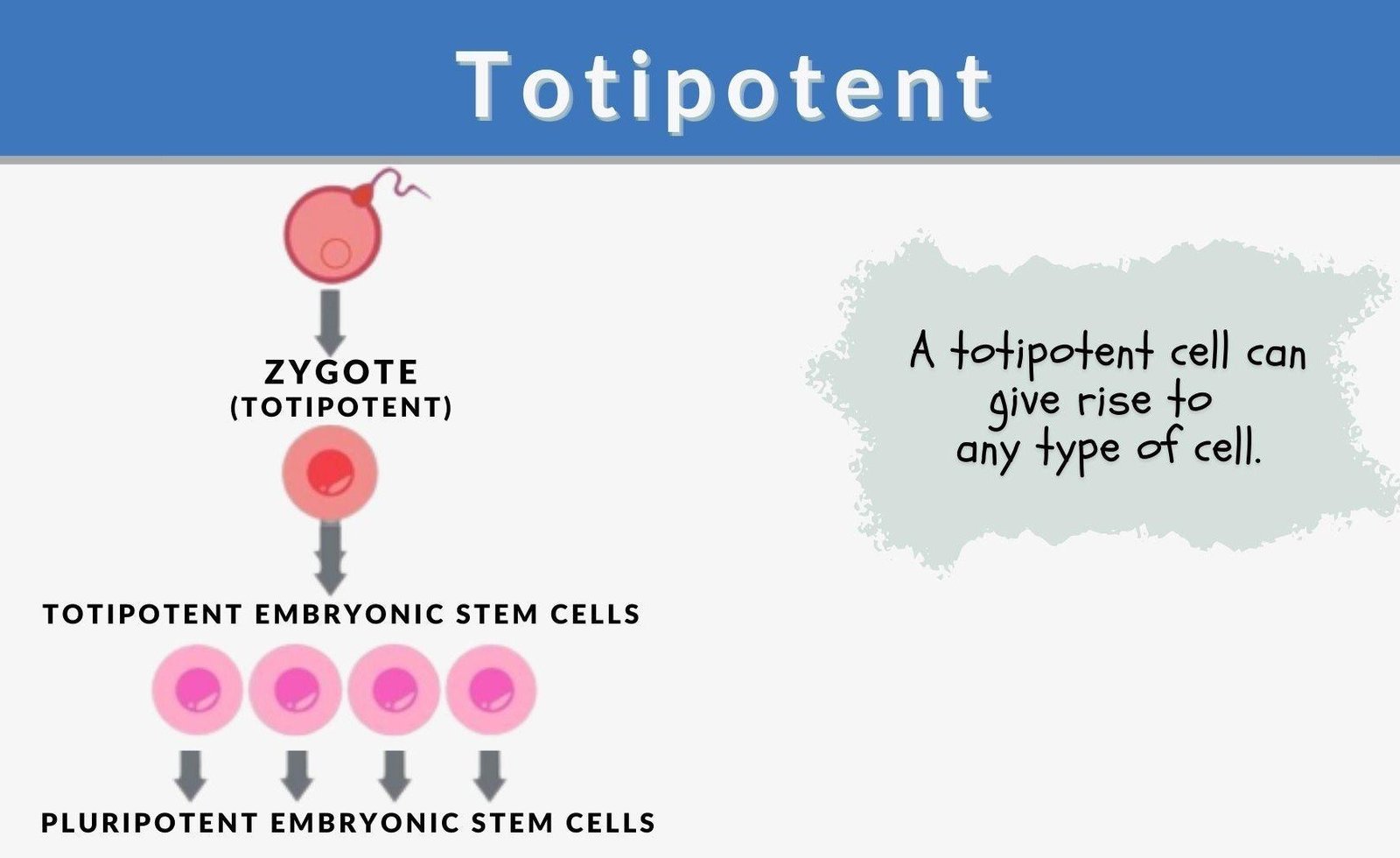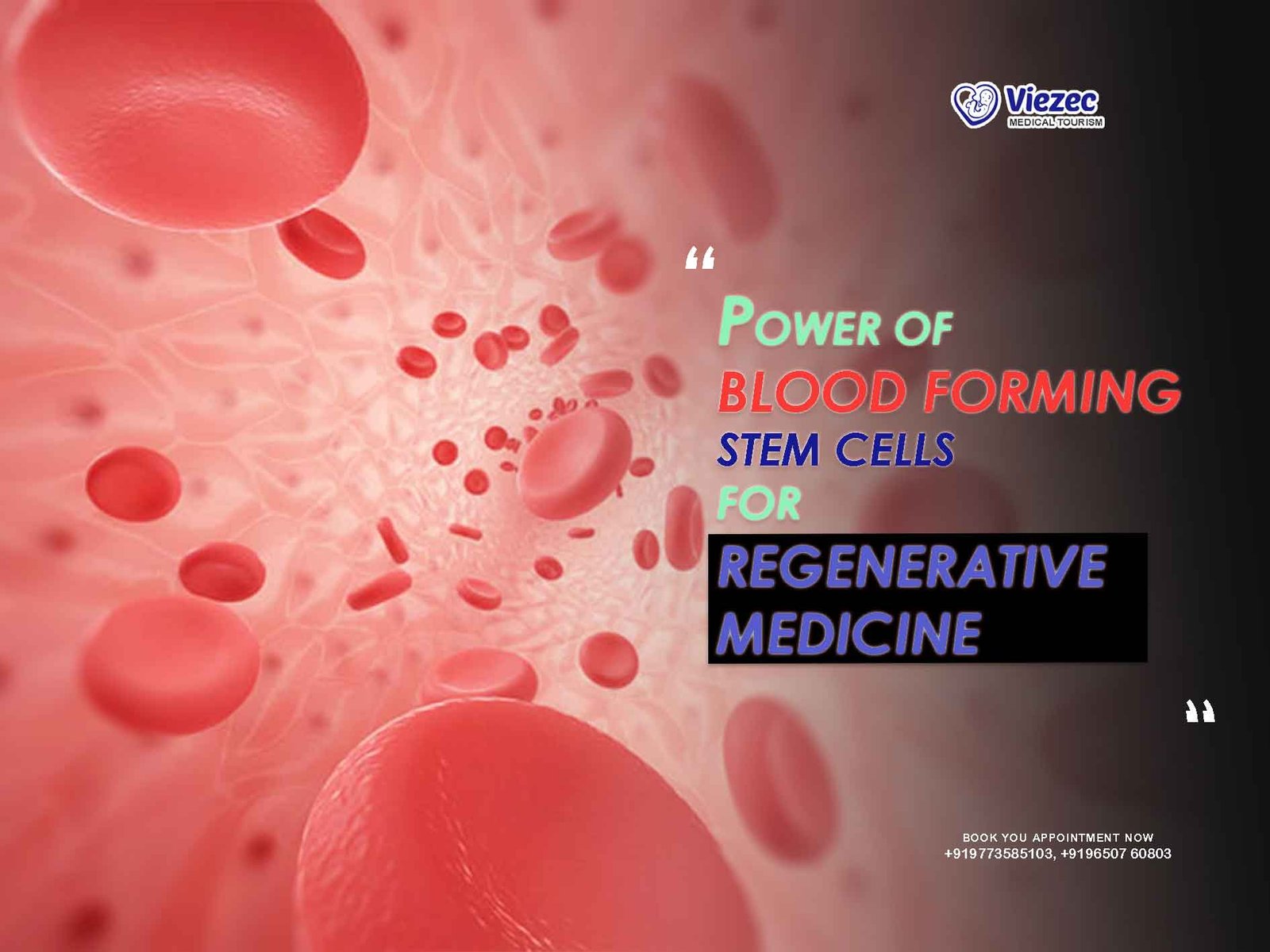Totipotent stem cells represent the earliest and most powerful stage of human development. These remarkable cells can give rise to every cell type in the body, as well as the supporting structures like the placenta—making them the biological foundation of life itself.
This article explores their origin in the fertilized egg, their transition into other stem cell types, and their unique characteristics such as full differentiation potential and self-renewal. It also highlights the growing scientific interest in totipotent cells for regenerative medicine, disease modeling, and even artificial embryogenesis.
With immense promise comes ethical responsibility. As research pushes the boundaries of what’s possible in labs, totipotent cells raise important questions about embryonic ethics, regulation, and clinical translation. Still, their role as a gateway to understanding human life and unlocking the future of personalized medicine makes them a central focus in the evolving landscape of stem cell research.
Introduction to Totipotent Stem Cells
What Does “Totipotent” Mean?
Totipotent stem cells are the most powerful and flexible cells nature has to offer. The word “totipotent” comes from the Latin totus, meaning “whole” or “entire”—and that’s exactly what these cells can become: the entire organism. From a single totipotent cell, both the entire body and the essential support structures like the placenta can develop. This sets them apart from other stem cell types like pluripotent or multipotent cells, which can form many—but not all—parts of an organism.
Why Totipotency Matters in Developmental Biology
Totipotency isn’t just a scientific curiosity—it’s the key that unlocks life itself. These cells appear at the very beginning of human development and have the remarkable ability to generate all cell types required for life. Understanding how they work is vital for researchers studying early human development, fertility, and potential future breakthroughs in regenerative medicine and gene therapy. Totipotent stem cells represent the biological starting line from which all complexity emerges.
Origins and Natural Occurrence
Totipotency in the Zygote and Early Embryo
The First Few Divisions After Fertilization
The journey of life begins with a single cell—a zygote—formed when a sperm and egg unite. This zygote is the ultimate example of a totipotent cell. In the earliest stages of development, it begins dividing: first into two cells, then four, then eight. Up to the 8-cell stage, each of these cells (called blastomeres) is still totipotent, meaning it has the full potential to develop into a complete human being, including the embryo and its supporting tissues like the placenta.
Transition from Totipotent to Pluripotent States
Around the 16-cell stage, something incredible happens. The once-identical cells begin to specialize. This phase—known as the morula stage—marks the gradual loss of totipotency. By the time the blastocyst forms, its inner cell mass becomes pluripotent. These cells can still develop into almost all body tissues, but not the extraembryonic components. This elegant biological transition ensures that some cells form the body, while others become the support systems needed for life in the womb.
Comparing Totipotent and Pluripotent Cells
Although they sound similar, totipotent and pluripotent cells are quite different in terms of potential:
-
Totipotent cells can become any cell in the body and the supporting structures like the placenta and yolk sac.
-
Pluripotent cells can become almost any cell in the body—but not those extraembryonic tissues.
Only totipotent cells have the ability to generate a complete organism on their own. This unique power is why they’re considered the gold standard in developmental biology.
Transform Your Life with Stem Cell Therapy
Explore the potential of totipotent stem cells for regenerative health. Take the first step towards better health today!
Characteristics of Totipotent Stem Cells
Ability to Differentiate into All Cell Types
Somatic Cells
Totipotent stem cells have an extraordinary ability: they can transform into any somatic cell in the body. Whether it’s a beating heart cell, a firing neuron, a skin cell, or a liver cell—these stem cells hold the full blueprint. This versatility is what makes them such a powerful tool for scientists seeking to understand how our bodies are built from scratch.
Extraembryonic Structures (Placenta, Yolk Sac)
What truly sets totipotent cells apart is their capacity to create extraembryonic tissues—like the placenta and yolk sac. These structures are essential for nourishing and supporting the embryo during pregnancy. No other stem cell type, not even pluripotent cells, can do this. It’s the reason totipotent cells alone can give rise to a full, viable organism.
Self-Renewal and Developmental Potential
In addition to their wide differentiation abilities, totipotent cells possess the remarkable trait of self-renewal. They can replicate themselves while maintaining their original state, which ensures a steady pool of undifferentiated, fully capable cells. This property is crucial during early development and provides insight into how organisms maintain cellular balance and growth. It also underpins much of the excitement around regenerative science, where recreating this balance in a lab could unlock powerful new treatments.
Scientific and Medical Importance
Role in Early Human Development
Totipotent stem cells are the spark that ignites human life. They are the very first cells formed after fertilization and are responsible for constructing not only the body but also the vital support systems like the placenta. When functioning correctly, these cells lay the groundwork for successful implantation, embryonic growth, and pregnancy. However, if totipotent cells don’t divide properly or fail to differentiate as needed, it can lead to failed pregnancies or developmental abnormalities. That’s why scientists pay such close attention to this stage—it’s the root of all biological possibility and vulnerability.
Applications in Research and Medicine
Regenerative Medicine
Though still mostly theoretical, the potential of totipotent cells in regenerative medicine is staggering. Imagine a world where we can generate entire organs or body systems from a single cell source. While this capability remains a distant goal, the foundation laid by studying totipotent cells could one day help make it a reality. Their unparalleled flexibility gives researchers a glimpse into what fully personalized, lab-grown therapies might look like.
Understanding Genetic Diseases
Totipotent cells also serve as a gateway to understanding how genetic disorders arise in the earliest stages of life. By studying how these cells function—or malfunction—scientists can trace the origins of certain congenital conditions and develop more effective methods for early diagnosis, prevention, or even correction through gene editing. In many ways, these cells are a window into nature’s most intricate construction project: the human body.
Discover the Power of Stem Cell Therapy
Learn how totipotent stem cells can help regenerate and restore your health. Contact us for more details.
Totipotent vs. Other Stem Cell Types
Pluripotent vs. Totipotent
While both totipotent and pluripotent stem cells are incredibly versatile, their capabilities are not equal. Pluripotent cells, like those found in the inner cell mass of the blastocyst, can become any body tissue—from muscles to neurons to skin. However, they cannot form the placenta or other extraembryonic tissues.
In contrast, totipotent cells can do it all. They can create both the embryo and the structures that support it. This broader potential is why totipotent cells are often seen as the master key of development—able to unlock every possible biological door.
Multipotent and Unipotent: Limited Potential
As cells specialize further down the developmental line, their potential becomes more restricted:
Multipotent stem cells can develop into several cell types within a specific family. For example, hematopoietic stem cells in bone marrow can become different kinds of blood cells but not nerve or liver cells.
Unipotent stem cells are highly specialized—they can only become one type of cell, such as skin or liver cells, and are often involved in routine maintenance and repair.
A Hierarchy of Cellular Potency
To understand how stem cells compare, scientists often refer to a potency hierarchy:
-
Totipotent – Can form all body and extraembryonic cells
-
Pluripotent – Can form all body cells but not extraembryonic tissues
-
Multipotent – Can form a limited range of related cell types
-
Unipotent – Can form only one specific cell type
Totipotent cells sit at the very top of this hierarchy—serving as the origin point from which all other cell types descend.
Laboratory Approaches and Synthetic Totipotency
Can Scientists Create Totipotent Cells in the Lab?
Replicating the magic of totipotency in a lab is one of modern biology’s most ambitious goals. While scientists have mastered the creation of pluripotent stem cells—like induced pluripotent stem cells (iPSCs)—reliably producing true totipotent cells remains elusive. The reason? Totipotency exists only for a fleeting window after fertilization, making it incredibly difficult to study, let alone reproduce under controlled conditions.
Still, the dream persists: if we could recreate totipotent cells in vitro, we might one day grow complete tissues—or even synthetic embryos—for research, therapy, or personalized regenerative treatments.
Reprogramming Techniques
To approach totipotency, researchers use cellular reprogramming—a process where adult somatic cells are genetically “rewound” to behave like embryonic stem cells. This is how iPSCs are made. To push the boundary further into totipotency, scientists experiment with tweaking gene expression, manipulating environmental signals, and mimicking conditions from early embryonic development. These methods aim to unlock a more primitive, all-capable state—but success remains partial and difficult to verify.
Challenges in Verifying Totipotency
Proving totipotency is much harder than simply observing cellular change. Unlike pluripotency, which can be validated by checking whether a cell can form all three germ layers (ectoderm, mesoderm, endoderm), confirming totipotency requires evidence that a cell can create both the organism and its extraembryonic support systems. In humans, this isn’t ethically feasible, making verification particularly challenging. Scientists often rely on mouse models or embryo-like structures to test functionality.
Breakthroughs in Induced Totipotency
Despite the hurdles, recent studies—particularly in rodents—have shown encouraging signs. Some lab-grown cells have begun to exhibit totipotent-like behavior, forming structures akin to early embryos or showing genetic markers consistent with totipotent potential. These findings may eventually lead to totipotent-like cells that are functionally close enough for research and therapeutic use, even if they don’t exactly match natural totipotent cells.
These breakthroughs offer a glimpse into a future where regenerative medicine could operate not just on replacement but on recreation—rebuilding entire biological systems from the ground up.
Unlock the Benefits of Totipotent Stem Cells
Find out how regenerative medicine can improve your life. Book an appointment now to get started.
Ethical and Legal Considerations
Controversies Around Embryonic Stem Cell Use
Totipotent stem cell research opens a world of possibilities—but also a host of ethical questions. Since naturally occurring totipotent cells exist only in the earliest stages of embryonic development, obtaining them often involves using human embryos. For many, this raises concerns about the moral status of the embryo. Does using a totipotent cell mean ending a potential human life?
These debates have sparked intense public, political, and scientific dialogue. As a result, many countries have placed strict limits on how embryonic cells can be used or funded. In some places, even studying embryos beyond a certain number of days is prohibited by law.
International Laws and Research Boundaries
The global landscape for stem cell research is a patchwork of policies that reflect cultural, religious, and ethical perspectives:
-
In the United States, federal funding is restricted for research that involves the destruction of human embryos, although private and state-funded research may be more flexible.
-
Across Europe, laws vary widely. Countries like Germany have stringent restrictions, while others like the UK allow regulated embryonic research under strict oversight.
-
In Asia, particularly China and South Korea, the laws are more permissive, allowing rapid scientific advancement but raising concerns about oversight and ethical rigor.
As science races ahead, regulatory frameworks are struggling to keep up. Striking the right balance—between scientific freedom and ethical responsibility—remains a central challenge for global research communities.
Limitations and Challenges
Difficulty in Isolating True Totipotent Cells
One of the biggest scientific hurdles with totipotent stem cells is their transience. These powerful cells exist for only a short time—right after fertilization—before beginning their journey toward specialization. That fleeting nature makes it incredibly difficult to isolate and study them in real time.
Additionally, because these cells are found only at the very beginning of embryonic development, ethical constraints often limit human studies. Most of our knowledge about totipotency comes from animal models, especially mice, which—while informative—aren’t perfect substitutes for human biology.
Maintaining Stability in Cultured Environments
Even if totipotent cells can be isolated or reprogrammed in the lab, keeping them stable is another challenge altogether. In culture, these cells often lose their totipotent traits quickly, differentiating prematurely or behaving unpredictably. Researchers are working to mimic the exact chemical and physical conditions of the early embryonic environment, but it’s a delicate balance.
Without precise control, totipotent cells may become too unstable for safe therapeutic use. This makes long-term cultivation and consistency two of the biggest obstacles in translating totipotent research into clinical applications.
Future Directions in Totipotent Stem Cell Research
Regenerative Therapies and Disease Modeling
Imagine a future where failing organs could be regrown from scratch—or where complex genetic diseases could be studied from the very first moments of development. That’s the promise totipotent stem cell research holds. If scientists can successfully replicate and control these cells in the lab, we may one day use them to grow fully functional tissues, model rare diseases, and test life-saving treatments—all personalized to the individual.
Because totipotent cells represent the full spectrum of biological potential, they offer a more complete model for understanding human development and pathology than pluripotent or multipotent alternatives.
Potential in Artificial Embryogenesis
Another frontier in this field is the creation of synthetic embryos—structures that mimic early embryonic development without using fertilized eggs. Researchers are already building embryo-like models using reprogrammed stem cells, and totipotent-like cells are key to advancing this work.
Artificial embryogenesis could provide ethical alternatives for developmental studies, eliminate the need for human embryos in some types of research, and help us better understand conditions like infertility, miscarriage, and early developmental disorders.
Can Totipotency Revolutionize Personalized Medicine?
The ultimate dream is to integrate totipotent science into personalized medicine—where treatments are tailored to the patient’s own biology. In the future, scientists might generate totipotent-like cells from a person’s tissue and use them to regenerate damaged organs, replace defective cells, or even develop entire organ systems for transplantation.
With careful ethical guidance and scientific rigor, totipotent cells could one day help solve some of medicine’s most intractable challenges—from organ shortages to genetic disorders.
Conclusion
Summary of Key Insights
Totipotent stem cells are nothing short of extraordinary. As the very first cells formed after fertilization, they have the unique ability to become every type of cell in the human body—and the vital structures that support it. Their unparalleled versatility makes them central to understanding how life begins, how diseases develop, and how we might one day rebuild what’s been lost.
Throughout this article, we’ve explored their origin, their role in early development, how they differ from other stem cells, and the vast promise they hold for science and medicine. We’ve also looked at the ethical and technical challenges that come with studying such powerful biological tools.
The Promise and Responsibility of Totipotent Stem Cell Research
With great potential comes great responsibility. As we stand on the edge of breakthrough discoveries, the scientific community must navigate carefully—balancing innovation with ethical integrity. Responsible research, transparent dialogue, and international cooperation will be key to ensuring that totipotent stem cell science progresses in a way that benefits all of humanity.
The story of totipotent cells is still being written. And with each new discovery, we come a little closer to unlocking life’s deepest secrets—and perhaps even rewriting the future of medicine.









